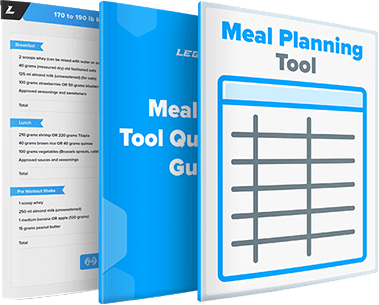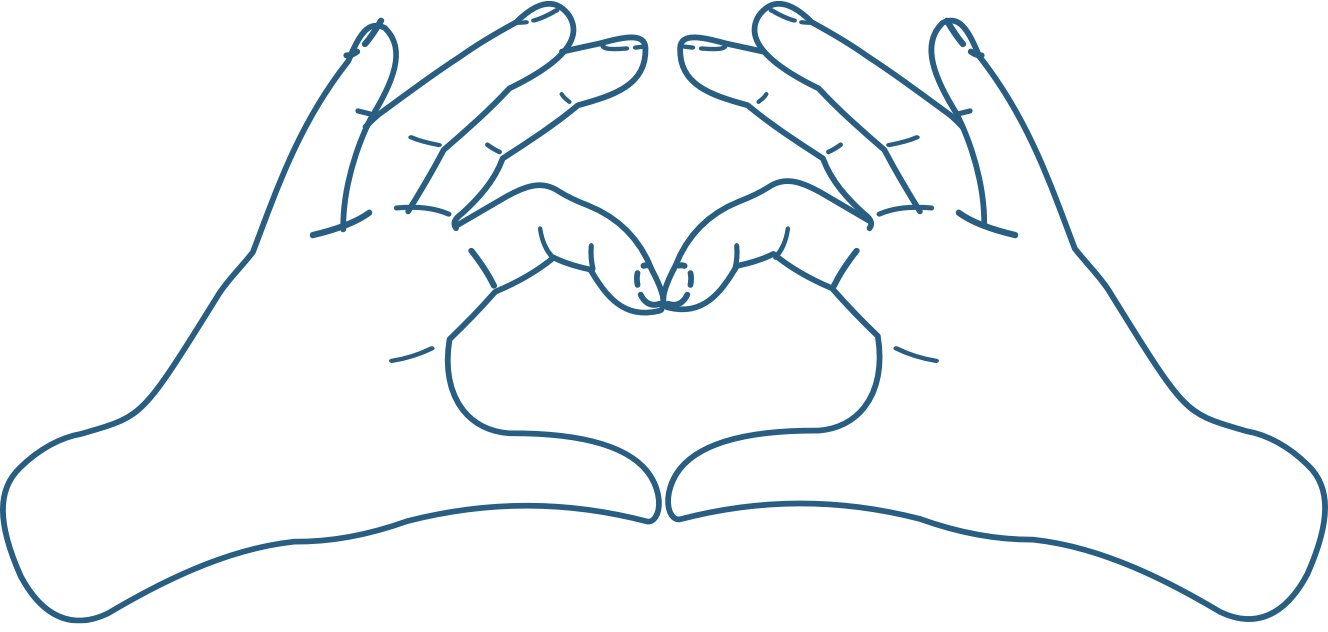How many chest exercises per workout should you do?
Search that question and you’ll find dozens of conflicting answers. Some say one or two. Others insist on six or more.
And things only get murkier once you start wondering how many chest workouts to do per week, how many sets per workout, and how much is too much.
Here’s the simple answer:
While there’s no “perfect” number for everyone, doing 3-to-4 chest exercises per workout usually works best if you train chest once per week.
If you train chest more frequently, you’ll likely get better results by doing fewer exercises per session and spreading your sets across multiple workouts.
In this article, you’ll learn exactly how many chest exercises and sets to do per workout—and per week—based on your goals and experience level.
Key Takeaways
- Doing 3-to-4 chest exercises per workout is ideal if you train chest once per week. This gives you enough exercise variety to train your pecs in different ways and avoid overuse injuries.
- If you train chest more than once per week, doing 2-to-3 exercises per workout is typically enough. Since you’re spreading your volume across multiple sessions, you don’t need to cram as much into each one.
- Most people get the best results by doing 6-to-10 hard sets for chest per workout, and 10-to-20 total sets per week. Doing more than that rarely leads to more growth and often just increases fatigue.
- The best rep range for chest growth is 4-to-10 reps per set using 70-to-80% of your one-rep max. It’s ideal for gaining size and strength without needing to train to failure.
- To make every set count, train to within 1-to-3 reps of failure and aim to gradually increase the weight or reps over time.
- To get the most out of your chest training, consider using a high-quality protein powder to help you reach your daily protein target, creatine to support recovery and muscle growth, and a pre-workout to enhance energy, focus, and performance.
Table of Contents
+
How Many Chest Exercises per Workout Is Optimal?
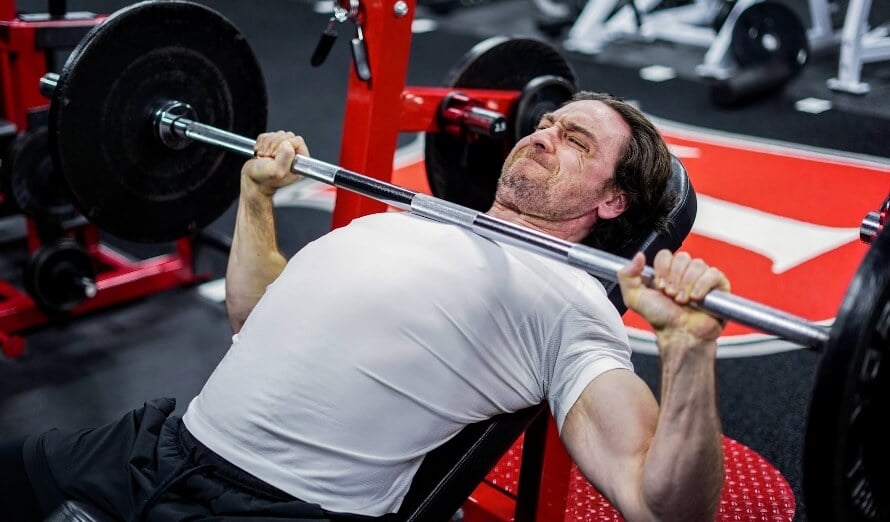
Doing 3-to-4 chest exercises per workout is usually enough to maximize growth. But to understand why that works, you first need to know how much total work—also known as “training volume”—you should do each week.
How Many Sets for Chest per Week Is Optimal?
Most research shows that 10-to-20 sets per major muscle group each week maximizes muscle growth.
Where you fall in that range depends on your experience. Generally speaking, beginners should aim for the lower end (10-to-15 sets), whereas more advanced weightlifters usually see better results with more volume (15-to-20 sets).
In some cases, doing more than 20 sets can produce greater gains. But for most people, progress diminishes so quickly beyond this point that the extra effort isn’t worth it.
High-volume training has practical downsides, too. It’s time-consuming, and unless your recovery (sleep, diet, etc.) is flawless, it’s hard to sustain.
That’s why 10-to-20 weekly sets is a smart, sustainable volume target for chest training.
How Many Sets for Chest per Workout is Optimal?
An unpublished meta-analysis suggests there’s a cap on how many sets you can do for a muscle group in a single workout before gains stall—or even reverse.
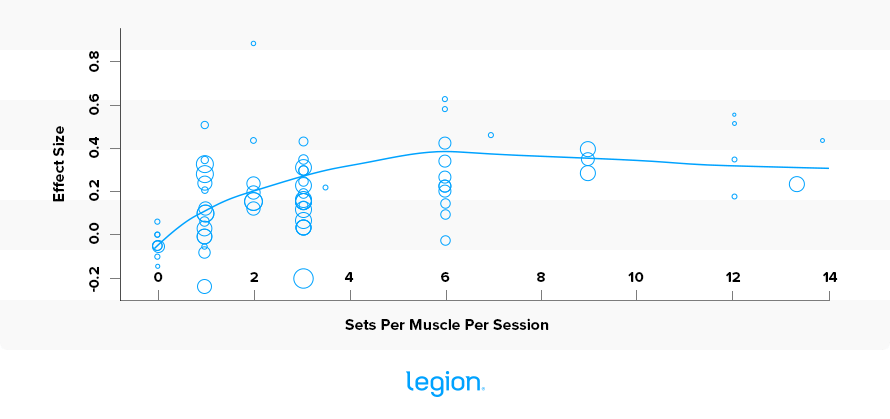
As the graph above shows, muscle growth improves as you do more sets—up to a point. Once you exceed six sets for a muscle group in a single session, the benefits plateau. Push closer to 14 sets, and you may actually impair growth.
That said, there’s plenty of variability in the data, so don’t treat this as holy writ. If we compare it with other research, a good rule of thumb is that most people can benefit from doing about 6-to-10 hard sets per major muscle group per workout before hitting the point of diminishing returns.
How Many Chest Exercises per Workout Is Optimal?
There’s no “perfect” number, but 3-to-4 chest exercises per workout works best if you train your chest once weekly. If you train more frequently, 2-to-3 chest exercises per workout is usually sufficient.
This is enough to train your chest through different ranges of motion and at varying angles, which research suggests is beneficial for balanced growth.
It’s also enough variety to keep your workouts engaging—which makes it easier to stay consistent over time—and helps reduce the risk of overuse injuries that can crop up when you repeat the same movements too often.
Just as importantly, doing 3-to-4 chest exercises per workout helps you stay within the ideal training volume ranges—6-to-10 hard sets per workout and 10-to-20 sets per week.
For instance, if you do 3 exercises for 3-to-4 sets each, that gives you 9-to-12 sets in a single session. That’s more or less perfect if you’re training chest once per week. If you’re training it twice, you could do 2-to-3 exercises per workout for 3-to-4 sets each and hit 12-to-16 weekly sets.
How Many Chest Workouts Should I Do per Week?
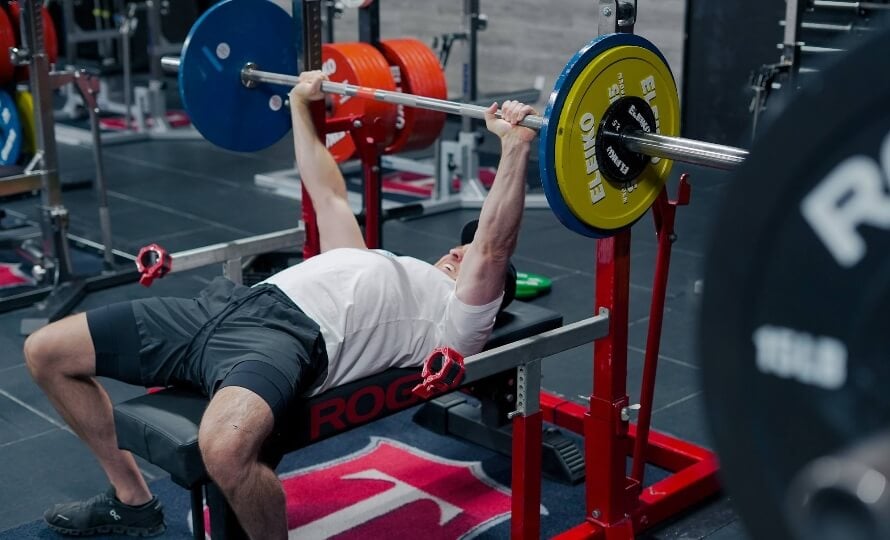
How often you train chest largely hinges on your weekly volume. For instance, if you’re doing 10 sets per week, you can likely do all these sets in a single weekly workout.
But once your weekly volume creeps up to 12-to-20 sets, splitting that work across at least two sessions usually leads to better results. It helps you maintain performance, recover more effectively between workouts, and reduce the risk of burnout.
READ MORE: Your Next Chest Routine for Mass: 7 Must-Do Pec Exercises
What’s the Best Rep Range for Chest Growth?
Despite what some “experts” claim, you don’t need to crank out sets of 20+ reps to build muscle.
While high-rep training can work, research shows it only builds muscle effectively if you take sets to failure—the point where you can’t complete another rep despite giving maximum effort.
That presents two problems:
- High-rep sets are miserable. They take longer, feel harder, and cause more fatigue than heavier, lower-rep sets.
- Constantly training to failure increases your risk of injury.
A better approach is to lift heavier weights in lower rep ranges. You’ll still generate a strong muscle-building stimulus—without pushing yourself to the brink every set.
That’s why it makes sense to do most of your chest training in the 4-to-10 rep range, using weights that are about 70-to-80% of your one-rep max.
READ MORE: Does Training to Failure Help You Build More Muscle? What Science Says
How Hard Should You Train Your Chest?

To make your chest workouts as effective as possible, take most of your sets to within 1-to-3 reps of failure.
To gauge whether you’re reaching this point, ask yourself at the end of each set: “If I had to, how many more reps could I have done with good form?”
If the answer is more than three, increase the weight or reps on your next set to make it more challenging.
Intensity alone isn’t enough, though. To keep building muscle and getting stronger, you also need to apply progressive overload. That is, you need to gradually increasing the weight you lift or the number of reps you perform over time.
Here’s how:
If your workout calls for 4-to-6 reps of the bench press and you complete 6 reps in a set, increase the weight by 10 pounds for your next set.
If you do 3 reps or fewer in subsequent sets, reduce the load by 5 pounds to stay in the 4-to-6 rep range.
Apply this approach to every exercise and you’ll make each set of chest training as effective as possible.
Volume-Optimized Chest Workout Routines

Here’s a recap of what typically works best for chest training, based on research:
- 10-to-20 chest sets per week
- 1-to-3 chest workouts per week
- 6-to-10 sets per chest workout
- 3-to-4 chest exercises per session
And here’s how to turn that into a practical training plan:
Routine #1: One Chest Workout per Week (4 Exercises)
This routine includes 10 total sets across 4 exercises—perfect if you train chest once per week and want a balanced mix of compound and isolation work.
- Barbell Bench Press: 3 sets | 4-to-6 reps | 3-to-5 min rest
- Incline Dumbbell Bench Press: 3 sets | 4-to-6 reps | 3-to-5 min rest
- Dip: 2 sets | 6-to-8 reps | 2-to-3 min rest
- Cable Fly: 2 sets | 8-to-10 reps | 2-to-3 min rest
Routine #2: One Chest Workout per Week (3 Exercises)
If want to keep things even simpler, this routine contains the same amount of volume as the first routine with just three heavy, compound presses:
- Barbell Bench Press: 4 sets | 4-to-6 reps | 3-to-5 min rest
- Incline Dumbbell Bench Press: 3 sets | 4-to-6 reps | 3-to-5 min rest
- Dip: 3 sets | 6-to-8 reps | 2-to-3 min rest
Routine #3: Two Chest Workouts per Week
If you’re doing more than 10 sets for your chest per week, it usually makes sense to spread them over two workouts.
Rather than dedicating both sessions solely to chest, a more efficient approach is to program them as “chest-focussed push workouts”—sessions that emphasize your pecs but also train your shoulders and triceps.
This works because you don’t need two full chest workouts to maximize growth—and trying to cram that much chest training into your week often eats into the time and energy you could be spending on other muscle groups.
Here’s how you might structure two push workouts that include 15 total sets for chest:
Push Workout #1
- Barbell Bench Press: 3 sets | 4-to-6 reps | 3-to-5 min rest
- Incline Dumbbell Bench Press: 3 sets | 4-to-6 reps | 3-to-5 min rest
- Shoulder Press: 3 sets | 6-to-8 reps | 2-to-3 min rest
- Overhead Triceps Extension: 3 sets | 8-to-10 reps | 2-to-3 min rest
Push Workout #2
- Incline Barbell Bench Press: 3 sets | 4-to-6 reps | 3-to-5 min rest
- Dip: 3 sets | 6-to-8 reps | 2-to-3 min rest
- Dumbbell Side Lateral Raise: 3 sets | 6-to-8 reps | 2-to-3 min rest
- Cable Fly: 3 sets | 8-to-10 reps | 2-to-3 min rest
If you want to go beyond 15 weekly chest sets, the simplest option is to stick with this structure and either perform extra sets of the chest exercises you’re already doing, or tack on 3 more sets in another workout during the week.
There’s no rigid rule about where to put them—just choose whatever fits best with your schedule and recovery.
The Benefits of Chest Training
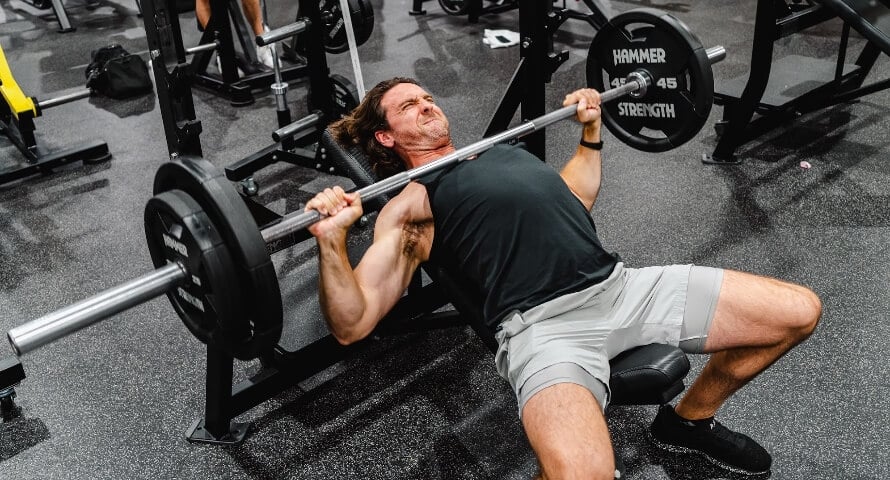
When people ask how many chest exercises per workout they should do, they’re usually focused on one thing: growing their pecs.
But the benefits of chest training go far beyond pec size.
Upper Body Muscle Growth
Training your pecs with compound exercises builds upper body mass in two ways.
First, the pecs are among the largest muscles in your upper body, so developing them adds noticeable size across your torso.
Second, compound chest exercises also train nearby muscles—especially the shoulders and triceps—which means you’re building overall upper body mass, not just your chest.
Enhanced Athletic Performance
Pressing exercises, like the flat or incline bench press, are exceptionally important for gaining upper body strength and power, making them ideal for athletes who need to throw, punch, jostle, or quickly get up off the ground in their sport.
What’s more, chest exercises like the dip or push-up are closed-kinetic-chain exercises—movements where you fix your hands or feet on a stationary object (e.g., dip bars or the floor).
This is significant because closed-kinetic-chain exercises help boost athletic performance in three ways:
- They improve balance and stability by engaging multiple muscle groups simultaneously.
- They mimic the movements used in sports, where you generate force with your entire body while your feet or hands remain planted and unsupported by equipment like benches or machines.
- They activate more stabilizer muscles, helping you build greater full-body strength and coordination.
Improved Posture
Tight pecs can cause your shoulders to round and your upper back to hunch. Chest exercises that deeply stretch your pecs help loosen these muscles, which can reduce tightness and help you maintain a more upright posture.
The Best Supplements for Maximizing Your Chest Workout Results
Knowing how many exercises to do for chest per workout—and following a routine that hits that range—goes a long way toward building an impressive chest. But if you want to get even more out of your training, the right supplements can give you an edge.
Here are three worth considering:
- Protein powder: Protein powder, such as whey or casein, provides your body with the nutrients needed to build muscle tissue and recover from workouts. For a clean and delicious protein powder, try Whey+ or Casein+.
- Creatine: Creatine boosts muscle and strength gain, improves anaerobic endurance, and reduces muscle damage and soreness from your workouts. For a natural source of creatine, try our creatine monohydrate, creatine gummies, or Recharge.
- Pre-workout: A high-quality pre-workout enhances energy, mood, and focus, increases strength and endurance, and reduces fatigue. For a top-tier pre-workout containing clinically effective doses of 6 science-backed ingredients, try Pulse with caffeine or without.
(If you’d like even more specific advice about which supplements you should take to reach your health and fitness goals, take the Legion Supplement Finder Quiz, and in less than a minute, you’ll know exactly what supplements are right for you.)
FAQ #1: How many chest workouts per week for strength?
If your goal is to get stronger, especially on the bench press, training your chest 2-to-3 times per week usually works best.
Strength has a large skill component, and practicing the bench press more often helps you get better at the movement.
Strength workouts typically revolve around low-rep, heavy bench pressing, with few (if any) isolation exercises. You might also include variations that strengthen your weak points, like close-grip bench if you have a weak lockout or paused bench if you struggle off your chest.
READ MORE: Increase Your Bench Press Max With 16 Science-Backed Techniques
FAQ #2: How many chest exercises per week if you train at home?
If you’re training at home with no equipment, your chest exercise options are limited—but that doesn’t mean you can’t make progress.
For most people, doing 2-to-3 push-up variations (e.g., regular push-ups, feet-elevated push-ups, diamond and push-ups) 2-to-3 times per week works well.
READ MORE: How to Do the Push-up: Form, Variations, and Workouts
FAQ #3: How long should a chest workout be?
A well-rounded chest workout typically lasts around 45-to-60 minutes. This is enough time to complete your sets while also allowing for plenty of rest between sets.
READ MORE: How Long Should You Rest Between Sets to Gain Muscle and Strength?
Scientific References +
- “View of the Resistance Training Dose-Response: Meta-Regressions Exploring the Effects of Weekly Volume and Frequency on Muscle Hypertrophy and Strength Gain.” Sportrxiv.org, 2024, sportrxiv.org/index.php/server/preprint/view/460/967.
- “Set Volume for Muscle Size: The Ultimate Evidence Based Bible.” Weightology, weightology.net/the-members-area/evidence-based-guides/set-volume-for-muscle-size-the-ultimate-evidence-based-bible/.
- Brigatto, Felipe A., et al. “Effect of Resistance Training Frequency on Neuromuscular Performance and Muscle Morphology after 8 Weeks in Trained Men.” Journal of Strength and Conditioning Research, vol. 33, no. 8, Aug. 2019, pp. 2104–2116, https://doi.org/10.1519/jsc.0000000000002563. Accessed 2 Aug. 2019.
- Zaroni, Rafael S., et al. “High Resistance-Training Frequency Enhances Muscle Thickness in Resistance-Trained Men.” Journal of Strength and Conditioning Research, vol. 33, July 2019, pp. S140–S151, https://doi.org/10.1519/jsc.0000000000002643.
- Burke, Ryan, et al. “Exercise Selection Differentially Influences Lower Body Regional Muscle Development.” Journal of Science in Sport and Exercise, 12 July 2024, https://doi.org/10.1007/s42978-024-00299-4.
- Costa, Bruna Daniella de Vasconcelos, et al. “Does Performing Different Resistance Exercises for the Same Muscle Group Induce Non-Homogeneous Hypertrophy?” International Journal of Sports Medicine, vol. 42, no. 09, 13 Jan. 2021, pp. 803–811, https://doi.org/10.1055/a-1308-3674.
- Schoenfeld, Brad J., et al. “Strength and Hypertrophy Adaptations between Low- vs. High-Load Resistance Training.” Journal of Strength and Conditioning Research, vol. 31, no. 12, Dec. 2017, pp. 3508–3523, https://doi.org/10.1519/jsc.0000000000002200.
- Ribeiro, Alex S., et al. “Acute Effects of Different Training Loads on Affective Responses in Resistance-Trained Men.” International Journal of Sports Medicine, vol. 40, no. 13, 9 Sept. 2019, pp. 850–855, https://doi.org/10.1055/a-0997-6680.
- López-Laval, Isaac, et al. “Relationship between Bench Press Strength and Punch Performance in Male Professional Boxers.” Journal of Strength and Conditioning Research, vol. 34, no. 2, Aug. 2019, p. 1, https://doi.org/10.1519/jsc.0000000000003362.
- Soriano, Marcos A., et al. “Weightlifting Overhead Pressing Derivatives: A Review of the Literature.” Sports Medicine, vol. 49, no. 6, 28 Mar. 2019, pp. 867–885, https://doi.org/10.1007/s40279-019-01096-8.
- Kwon, Yoo Jung, et al. “The Effect of Open and Closed Kinetic Chain Exercises on Dynamic Balance Ability of Normal Healthy Adults.” Journal of Physical Therapy Science, vol. 25, no. 6, 2013, pp. 671–674, www.ncbi.nlm.nih.gov/pmc/articles/PMC3805008/, https://doi.org/10.1589/jpts.25.671.
- Kim, Mi-Kyoung, and Kyung-Tae Yoo. “The Effects of Open and Closed Kinetic Chain Exercises on the Static and Dynamic Balance of the Ankle Joints in Young Healthy Women.” Journal of Physical Therapy Science, vol. 29, no. 5, 1 May 2017, pp. 845–850, www.ncbi.nlm.nih.gov/pmc/articles/PMC5462684/, https://doi.org/10.1589/jpts.29.845.
- Afonso, José, et al. “Strength Training versus Stretching for Improving Range of Motion: A Systematic Review and Meta-Analysis.” Healthcare, vol. 9, no. 4, 7 Apr. 2021, p. 427, www.ncbi.nlm.nih.gov/pmc/articles/PMC8067745/, https://doi.org/10.3390/healthcare9040427.
- Stokes, Tanner, et al. “Recent Perspectives Regarding the Role of Dietary Protein for the Promotion of Muscle Hypertrophy with Resistance Exercise Training.” Nutrients, vol. 10, no. 2, 7 Feb. 2018, p. 180, www.mdpi.com/2072-6643/10/2/180/pdf.
- Eckerson, Joan M., et al. “Effect of Creatine Phosphate Supplementation on Anaerobic Working Capacity and Body Weight after Two and Six Days of Loading in Men and Women.” The Journal of Strength and Conditioning Research, vol. 19, no. 4, 2005, p. 756, https://doi.org/10.1519/r-16924.1.
- Bassit, Reinaldo Abunasser, et al. “Effect of Short-Term Creatine Supplementation on Markers of Skeletal Muscle Damage after Strenuous Contractile Activity.” European Journal of Applied Physiology, vol. 108, no. 5, 3 Dec. 2009, pp. 945–955, https://doi.org/10.1007/s00421-009-1305-1.
